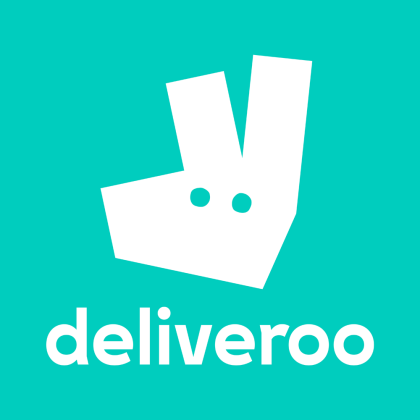5 Ideas to Promote Your Hospitality Business When Consumer Spending is Down
When your business experiences a drop in sales, it might make you feel a bit helpless. Many managers might batten the hatches and hope to ride out the storm.
But there are demonstrable ways to combat the reduction in spending and encourage people to visit your establishment again, even during difficult periods. Here are Epos Now’s tips for marketing your hospitality business when consumer spending is down.
1. Build a presence on every platform
Just like any other industry, the hospitality industry was created to meet a demand. If a customer wants a particular kind of food, drink or experience, the first place they encounter that can meet that need will win their custom.
As a result, companies benefit from researching where they can push their brand to put themselves first in line as often as possible.
The internet has dramatically changed most parts of the hospitality industry. The chance to shape the experience around more specific desires has made putting yourself first in line much more difficult.
Competition is fierce as hotels struggle to increase bookings which makes getting noticed difficult. Online travel agencies also take a healthy portion (between 10 and 30%) of the booking fees. However, they can be crucial in filling otherwise empty rooms.
Meanwhile, restaurants and takeaways pay commissions to platforms like Deliveroo, but a listing on such a popular platform provides valuable exposure to potential customers.
Though competition is thick in these areas, both hotels and restaurants can benefit from spreading a wide net.
Businesses that haven’t yet, or aren’t suited to promotions, or similar marketable strategies, can still benefit from a website or blog. They can also market widely on social media for no cost, boosting their online presence.
Advertising your food online has never been so easy than with a Deliveroo integration.
- Automate the order process, connecting Deliveroo directly to your KDS) and send delivery orders to your kitchen in record time
- Monitor delivery orders with the same attention to detail you give in-house sales using the same Epos Now reports
- Eliminate mistakes and unfulfilled orders by removing out-of-stock and discontinued items easily from both Epos Now and Deliveroo platforms with simple, user-friendly software
- Promote your products on one of the UK’s largest food delivery platforms

2. Reach people more directly with physical advertising
A lot of advertising is online these days, but reaching new customers doesn’t have to involve the internet. In particular, takeaway services might consider the marketing and branding power of a physical presence.
Restaurants and takeaways predominantly rely on local custom. Online, businesses have to muscle it out against a wider number of competitors. But physical adverts such as roadsigns and mail-delivered leaflets with a prominent local address can raise the neighbourhood's awareness of your business and win reliable new customers.
Eager local businesses can find innovative ways of doing this, often through working with other businesses. Sponsorships or partnerships with local companies can make you very visible and can encourage the self-fuelling word-of-mouth publicity every entrepreneur hopes to achieve.
3. Rebranding your product as essential
Even with your product well placed and widely recognised across platforms, you may still struggle to sell during tough economic times.
Harvard Business Review theorises that customers think about spending in four main ways: as essential “must-buys”, as occasional “treats”, as postponable “buy-laters”, and as expendable “non-necessities”[1]. Their four different kinds of consumers will reduce expenditure within those brackets differently:
- Slam-on-brake savers will cut out all expendable and postponable purchases while reducing the number of treats they indulge in to maximise their financial security.
- Pained-but-patient purchasers will cut out most expendables, delay some of their extra expenses and drop some of their regular treats.
- Comfortably-well-off consumers will drop some luxuries but will not forego many of their preferred products.
- Live-for-today livewires, the dream diner, will not want to reduce expendables and will spend whatever income they have. However, they may not expand into new areas of consumption.

Harvard Business Review outlines different ways of marketing to these different consumers. Still, in each case, companies selling less essential products will have more work to do to retain revenue.
Combatting a non-necessity branding means repositioning the business within the market, which doesn’t necessarily mean changing the product itself. You’ve likely invested large sums in creating your hotel or kitchen already. However, rebranding or adjusting the marketing strategy to highlight the product's relationship to an essential need in the consumer’s life can make all the difference.
Luxury restaurants provide many nutritional dishes, while fast food vendors can highlight the value for money they provide. Similarly, hotels can draw attention to the stress-relieving getaways they offer. Focusing marketing materials on such aspects of the product can make customers to reconsider if they want to cut you out of their purchasing habits.
4. Create urgency with limited-time promotions
When consumers look to make savings, expense plays a larger part in every sale. The hospitality industry is particularly vulnerable when consumers look to save as it does not fall into an essential purchase bracket, even cheaper foods, drinks and services won’t sell strongly when your customers prioritise other items.
One tactic that can be employed is a limited-time promotion campaign. These promotions redirect the attention from the actual price of the purchase to the savings they can make if they buy the product right away. Promotions like these break down the barrier between buying and saving money because savings are made whether someone buys or not.
Psychology Today published a study of limited-time offers assessing the factors influencing their success and how they work[2]. Choosing when an offer should end has a crucial impact, and a business’s market position can influence the length it should be.
The takeaways from the study suggest:
- Well-known brands suit shorter offers that increase “anticipatory regret” at missing out on a deal.
- Smaller businesses that try to emulate this can inspire a “burden of inconvenience” that can lead to customers rejecting the offer.
- Psychologists believe including a reason such as “while stock lasts” for the offer can counteract the burden of inconvenience, creating a sense of inclusion and can increase the offer's attractiveness.
- Anticipatory regret seems to be a more potent commercial force than curiosity or interest in a product, suggesting that “don’t miss out” messaging can push consumers into making purchases.
5. Focus on more economical forms of advertising
When your customer base feels more hesitant about making purchases, maintaining regular contact with them through your marketing channels becomes critical.
Businesses that strategise their CRM (customer relationship management) alongside their usual marketing can boost customer retention by a whopping 27%, with a 29% sales increase[3].
These kinds of statistics reinforce the fact that customers respond to communicative, attentive businesses that maintain a dialogue and build their brand in a direct and personal manner.
Helpfully, the kinds of comms that you can use in CRM tend to be the most economical. Email marketing in the form of a newsletter only costs the time it takes to write it. Apps like Mailchimp integrated to your EPOS customer base can even help reduce any time spent contacting customers.
A newsletter can retain engagement with customers even when they’ve not been in for a while. They inform your customers about the latest offers and promotions, friendly new faces at the business, and any other exciting news such as events or expansions.
Posting on social media can also communicate a lot of similar information that expresses the human, relatable side of your business. When connected to the daily life on site, customers considering whether or not they want to drop in don’t just think about a faceless business; they think about you, your team, and everything they know about you.
Any questions? Submit your details below and have an expert from our team get in touch
